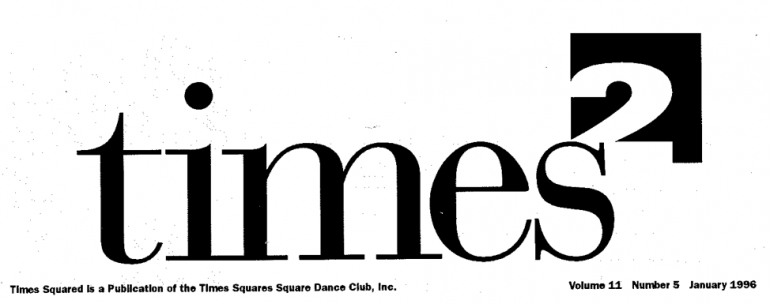Click here for the previous part and here for the next part.

Symmetry and Image Dancers
In his book, The Extemporaneous Caller, Bill Davis defines the concept of “Image Dancers,” which are dancers who are diametrically opposite across the set from each other, and at the dame distance from the flagpole center of the square. Image dancers will always be the same dance genders (e.g. two girls or two boys.) Many people refer to image dancers as “mirror dancers” or “mirror opposites.”
Assuming all called choreography in a given sequence is symmetric in nature, all image dancers will always remain symmetric, and at the same distance from the flagpole center of the square. It doesn’t matter what the formation is.
A formation is considered symmetric if both of the following conditions apply: (A) A line from any dancer through the flagpole center of the square intersects a dancer at the same distance from the center on the other side. (B) Any two image dancers are facing the same direction (e.g., clockwise, counterclockwise, in, out, etc.) relative to the flagpole center of the square.
Using Your Image Dancer to Recover
Now that you know what an image dancer is, you can easily use this concept to review your part of a broken square.
If you’re dancing in a square and suddenly don’t know where you should go or are uncertain that you ended up in the correct spot, just look across the flagpole center of the square. Is that your image dancer? If so, you’re probably OK (unless both of you made the same mistake, in which case there’s nothing more you can do.) If it’s not your image dancer, move into the position in your half of the square that corresponds to your image dancer.
Speaking frankly, this method will only work if you have an image dancer that you know dances at least as well as you do. If you think you image dancer is weaker that you, this method probably won’t work.
Using Your Mirror Dancer to Recover
If you have a weak image dancer, don’t give up – there is still hope!
It’s always a good idea when squaring up to make a mental not of your partner, your corner, and your image dancer. (This is one of the reasons many callers often deliberately draw your attention to those people at the beginning of a tip – for example “Bow to your partner, Yellow rock your corner…”) Let’s add one more person to that list: your “mirror dancer” in another square.
When you square up, after you figure out who’s who in your square, make a point of finding another nearby square, and make a mental note of who in that square is dancing in your position. If you’re the #2 girl in your square, not down the #2 girl in the square next to you. All you have to remember is the person dancing the same position as you.
If you find yourself losing track during a complex sequence, take a quick glance at the other square, and wee where your mirror dancer is. I’ve observed this technique being used frequently in Advance and Challenge dancing, where I’ve heard it termed “checkpointing.” If you get lost, this may be the fastest way for you to get back into the correct position.
Please note: checkpointing, or using your mirror dancer, is not a substitute for knowing dance calls! This is a technique I suggest using on y during complex or unfamiliar choreography, where you think you’re doing the calls correctly, but perhaps missed a call or part of a call and got confused.


